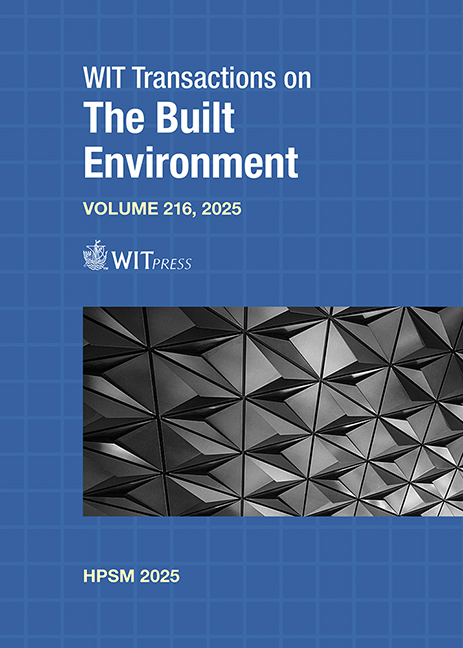EFFECT OF VOLUME FRACTION AND INTERFACIAL AREA BETWEEN FIBRE AND RESIN ON MECHANICAL PROPERTIES OF CNF-ADDED NATURAL FIBRE REINFORCED PLA COMPOSITES
Price
Free (open access)
Transaction
Volume
216
Pages
10
Page Range
79 - 88
Published
2025
Paper DOI
10.2495/HPSM250071
Copyright
Author(s)
SEIJI MITSUBAYASHI, KENICHI TAKEMURA
Abstract
In recent years, green composites (GCs), which are biodegradable resins reinforced with natural fibres and have excellent specific strength, have attracted attention from the viewpoint of environmental impact. To improve the mechanical properties of GCs, it is necessary to enhance the interfacial adhesion between fibre and resin, and recent attempts have been focused on improving the mechanical properties of GCs by adding cellulose nanofibres (CNF) to the interface between fibre and resin. However, the effects of volume fraction and interfacial area between fibre and resin on the mechanical properties of CNF-added natural fibre reinforced composites have not been clarified. Therefore, to explain these effects, the tensile strength of CNF-added natural fibre reinforced composites was evaluated by varying the content of twisted natural fibres in the composites and the interfacial area between the fibres and the resin. The following conclusions can be obtained from this study: (1) The tensile strength of natural fibre-reinforced PLA composites decreases as the interfacial area between the fibres and the resin increases, even when the fibre volume is the same; and (2) Although the tensile strength can be improved by increasing the amount of CNF as the interfacial area increases, the strength cannot be improved as much as when the interfacial area is small because the fibres tend to aggregate.
Keywords
green composites, natural fibre, volume fraction, interfacial area, cellulose nanofibre, tensile strength





